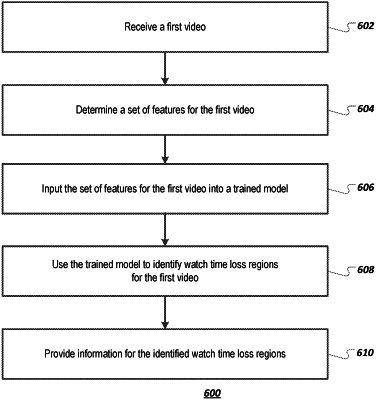| CPC H04N 21/23418 (2013.01) [H04N 21/23424 (2013.01); H04N 21/251 (2013.01); H04N 21/26241 (2013.01); H04N 21/44222 (2013.01); H04N 21/854 (2013.01)] | 21 Claims |

|
1. A computer-implemented method comprising:
receiving a first video;
determining a set of features for the first video;
inputting the set of features for the first video into a trained model, wherein (1) the trained model is trained to output watch time loss regions in a particular video, (2) the trained model is trained using labels corresponding to known watch time loss regions in a plurality of training videos and features of the plurality of training videos that correspond to the known watch time loss regions, and (3) a watch time loss region for a particular video defines a time window of the particular video during which a likelihood of a user stopping playback of the particular video is more than a threshold likelihood;
in response to inputting the set of feature for the first video into the trained model, obtaining, from the trained model, data regarding watch time loss regions for the first video; and
providing, to an entity involved in providing the first video to a user, the data regarding the watch time loss regions for the first video.
|